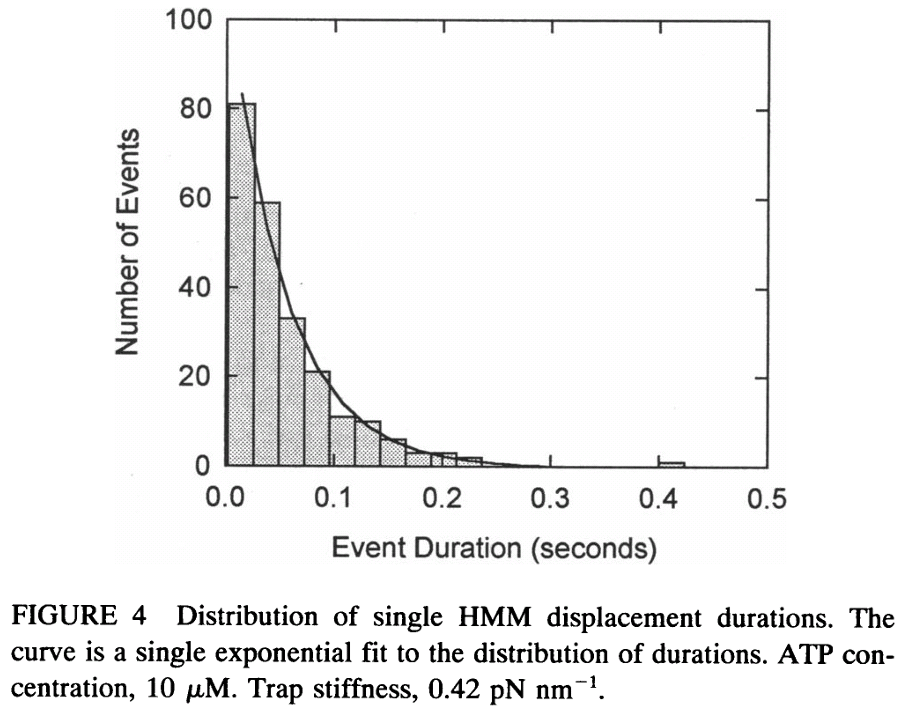Your question is a good one. The velocity of muscle contraction depends on the:
- Initial length of the muscle
- The Load on the muscle
 Source: Medical Physiology : a cellular and molecular approach by Walter F. Boron, Emile L. Boulpaep - 2nd ed. Page 248
Source: Medical Physiology : a cellular and molecular approach by Walter F. Boron, Emile L. Boulpaep - 2nd ed. Page 248
From the above picture we can see that:
- The velocity of muscle contraction is not constant. Initially it is zero and then it accelerates to reach a peak
- The maximum velocity of muscle contraction is constant at any different initial muscle length
- The lower the load the steeper the rise of velocity
So the velocity of muscle contraction should be calculated on a case by case basis.
What can be calculated
What can be calculated is the displacement and frequency of actin myosin cross-bridging.
Under microscopically isotonic conditions, the quantal displacement of a single cross-bridge is ~11 nm.
The frequency of actin-myosin cross-bridging depends on atleast:
- ATP concentration
- Temperature
At an ATP concentration of 1 µM the frequency is 3.8 ± 0.4 M-1s-1
At 170C the mean time for single displacement was 15±20 ms. While at 250C the mean was 6.4±3.6 ms.
 Source: Characterization of Single Actin-Myosin Interactions by Jeffrey T. Finer, Amit D. Mehta and James A. Spudich.
Biophysical Journal, Volume 68, April 1995, p.291s-297s
Source: Characterization of Single Actin-Myosin Interactions by Jeffrey T. Finer, Amit D. Mehta and James A. Spudich.
Biophysical Journal, Volume 68, April 1995, p.291s-297s
Concerning your actual question regarding the quadriceps velocity and the velocity of the swing, you should keep the following in mind while calculating:
Quadriceps acts over a second order lever: The Knee is the fulcrum, the effort is put over the tibial tuberosity where the quadriceps is inserted and the load is the foot and whatever it hits/lifts...
The contraction of the quadriceps is calculated as linear velocity while the kicking action is circular - so what you actually observe is the angular velocity. So appropriate angular velocity to linear velocity conversion should be made.
All the best!


